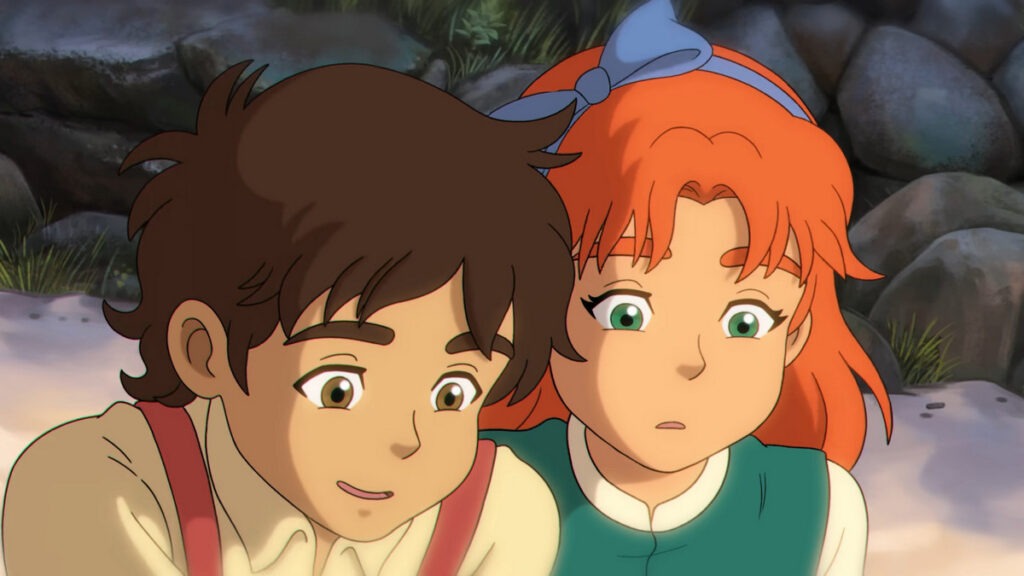In a landmark achievement for Pakistani cinema, “The Glassworker” stands as the nation’s first hand-drawn animated film, setting a new precedent in animation and storytelling.
Created by the visionary artist Usman Riaz, this film is a technical marvel and a poignant anti-war narrative, reflecting a profound, resonant message of peace and human connection.
The Compelling Storyline of “The Glassworker”
Pakistan’s first hand-drawn animated film has made waves nationally and is trending on social media. Many people are eager to see it, but some want to know what “hand-drawn animated film” implies.
Computer-generated imagery (CGI) and hand-drawn animation are two different types of animation.
CGI enables the creation of intricate and sophisticated visuals, while hand-drawn animation requires meticulous hand labour to create each frame.
Usman Riaz, the film’s creator, pursued his early passion for sketching to a new level in an era dominated by CGI and VFX. In addition to creating the film’s storyboard, He made over 14,000 preliminary drawings to bring the narrative to life on screen.
Let’s first discuss Riaz briefly before getting into the movie’s specifics.
At 23, he commenced work on the film over ten years ago. At age four, Riaz was fascinated by music, eventually leading him to study film and art at Karachi’s Indus Valley School of Arts.
In an interview with Geo Digital, he explained why completing the movie took him so long.
A Decade-Long Labor of Love
The creation of “The Glassworker” was a journey spanning ten years, a testament to Usman Riaz’s dedication and passion.
The meticulous hand-drawn animation is a painstaking process that harkens back to the traditional techniques of classic animated films. Marked this extensive period. Riaz and his team at Mano Animation Studios brought each “The Glassworker” frame to life as a piece of art.

Riaz’s vision to create a global film resonating globally while remaining deeply rooted in Pakistani culture and aesthetics fuelled the decade-long production.
The detailed artistry involved in every scene reflects a commitment to quality and authenticity. Ensuring that the film tells a compelling story and showcases the beauty of hand-drawn animation.
A Unique Anti-War Narrative in The Glassworker
“The Glassworker” weaves a touching narrative about the lives of two young protagonists, Vincent and Alliz. Set against the backdrop of a glassblowing workshop, their story unfolds in a world torn apart by war.
The movie examines themes of love, innocence, and the destructive effects of war via their experiences.
What sets “The Glassworker” apart is its subtle yet powerful anti-war message. Riaz uses the delicate craft of glassblowing as a metaphor for the fragility and beauty of human life and relationships.
War shatters these delicate creations, much like it does to lives and societies, while the intricate process of creating glass mirrors the effort required to build and maintain peace.
Cultural and Artistic Significance
The film’s significance extends beyond its anti-war narrative. It represents a cultural milestone for Pakistan, a country with a burgeoning but often overlooked animation industry.
By choosing to hand-draw the entire film, Riaz and his team have paid homage to the timeless art of animation and set a high standard for future Pakistani animated films.
“The Glassworker” has garnered international attention, bringing Pakistani storytelling and animation to a global audience.
This recognition is essential in a world increasingly looking for various perspectives and stories.
The film’s success could pave the way for more animated projects from Pakistan, encouraging local artists to explore and experiment with this medium.
Stunning Production Design
In addition to its anti-war theme, “The Glassworker” is notable for its remarkable production design, particularly the stunning architecture of its waterfront town setting.
This setting draws inspiration from the cityscapes of Karachi, infusing the film with a sense of familiarity and cultural depth.
Outstanding attention to detail depicts the waterfront town from its bustling marketplaces to its serene seaside vistas. The meticulous craftsmanship of each element reflects the charm and complexity of Karachi’s architecture.
This visual depth strengthens the narrative and places the movie in a familiar and genuine Pakistani setting.
The blend of traditional and contemporary architectural elements creates a unique aesthetic that is timely and evocative, drawing viewers into the world of “The Glassworker” with its immersive and vivid landscapes.
The film’s visionary is Usman Riaz.

The mastermind behind “The Glassworker,” Usman Riaz, is a multi-talented artist renowned for his animation, music, and art abilities.
His journey from musician to animator is as inspiring as the film’s.
Riaz’s ability to blend different art forms has given “The Glassworker” its unique charm. The film combines a rich visual aesthetic with a soulful musical score.
Riaz’s dedication to his craft and willingness to tackle challenging themes through animation has made him a trailblazer in the industry.
His work on “The Glassworker” exemplifies how passion and perseverance can break new ground and bring fresh, meaningful narratives to the forefront.
In conclusion.
More than just a movie, “The Glassworker” is a landmark of artistic expression and a significant milestone for Pakistani filmmaking.
Usman Riaz’s decade-long dedication to this project has culminated in a beautifully crafted, hand-drawn anti-war narrative that resonates with audiences worldwide.
The film highlights the devastating impacts of war and showcases the rich potential of Pakistani animation, inspiring a new generation of artists to follow in Riaz’s footsteps.
Keep on Reading:
- Animating history: ‘The Glassworker’ as Pakistan’s first hand-drawn anti-war film.
- Grand Theft Auto VI (GTA 6): A Highly Anticipated Unveiling on December 5



